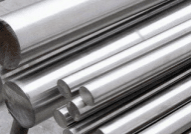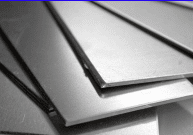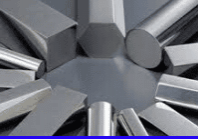Stainless Steel 303



Stainless Steel 303
303 is a chromium-nickel austenitic stainless steel known for its free-machining properties, good strength, and corrosion resistance. It is typically supplied in an annealed state with a Brinell hardness of around 190.
This steel is noted for its excellent machinability and resistance to galling, attributed to its higher sulfur content. While this addition slightly reduces its corrosion resistance, 303 still offers adequate resistance to general atmospheric conditions, foodstuffs, sterilizing solutions, dyes, and most organic and some inorganic chemicals. However, its resistance to acids is quite limited.
303 cannot be hardened through thermal treatment, but its strength and hardness can be significantly increased by cold working, though this process will reduce its ductility.
This steel is predominantly used for production runs that involve extensive machining or complex parts requiring excellent machinability. Common applications include architectural components, food processing equipment, dairy equipment, dyeing industry tools, hardware, and kitchenware manufacturing. It is often used to make bolts, nuts, bushes, gears, shafts, valve bodies, and fittings.
In the annealed condition, 303 is non-magnetic but can become slightly magnetic after substantial cold working. If necessary, annealing can be used to restore its non-magnetic properties.
| Related Specifications | |
| Australia | AS 2837-1986-303 |
| Germany | W.Nr 1.4305 X10CrNiS 18 9 |
| Great Britain | BS970 Part3 1991 303S31 BS970 1955 EN58M |
| Japan | JIS G4303 SuS 303 |
| USA | ASTM A582/582M-95b 303 SAE 30303 AISI 303 UNS S30300 |
Chemical Composition
The chemical composition of stainless steel 303 is as follows:
| Chemical Composition | ||
| Min. % | Max % | |
| Carbon | 0 | 0.15 |
| Silicon | 0 | 1.00 |
| Manganese | 0 | 2.00 |
| Nickel | 8.00 | 10.00 |
| Chromium | 17.00 | 19.00 |
| *Molybdenum | 0 | 1.00 |
| Phosphorous | 0 | 0.06 |
| Sulphur | 0.15 | 0.35 |
| *Molybdenum option addition. |
This composition provides stainless steel 303 with its distinct properties, including good corrosion resistance, excellent machinability, and reasonable strength. The higher sulfur content enhances its machinability but slightly reduces its corrosion resistance compared to other austenitic stainless steels like 304. read below for more details on 303's properties.
Temperature Properties and heat treatment
| Typical Mechanical Properties At Room Temperature - Annealed | |||
| Finish | Cold Drawn | Other | |
| Tensile Strength Mpa | 720 | 600 | |
| Yield Strength Mpa | 510 | 240 | |
| Elongation in 50mm % | 36 | 55 | |
| Impact Charpy V J | 120 | ||
| Hardness | HB | 220 | 165 |
| Rc | 165 |
Elevated Temperature Properties |
| 303 displays good oxidation resistance in continuous service up to 870 oC and in intermittent service up to 760 oC.
Continuous service however, between 430 oC and 850 oC is not recommended, nor is slow cooling through this range due to the problem of intergranular corrosion. N.B. High temperature use is therefore not generally recommended. |
Cold Bending |
| 303 has very limited cold bending properties and it is not generally recommended. |
Hot Blending |
| Hot bending should be performed at 950 oC - 1100 oC, followed by annealing to restore optimum corrosion resistance. |
Corrosion Resistance - All Corrosion Types |
| 303 stainless steel, owing to its elevated sulfur content, exhibits lower resistance to various types of corrosion compared to 304 and other austenitic stainless steels in the 300 series.
Therefore, its selection is typically based on its exceptional machinability, despite its relatively diminished corrosion resistance. Note: It's critical to ensure that oxygen can freely circulate on all stainless steel surfaces to maintain a protective chromium oxide film. Failure to do so may result in rusting, similar to non-stainless steel materials. For optimal corrosion resistance, surfaces must be devoid of scale and foreign particles. Finished parts should undergo passivation. |
| Forging |
|
Heat the material uniformly to a temperature range of 1150°C to 1200°C, and maintain it until the temperature is consistent throughout the section.
|
Heat Treatment |
Annealing |
| Heat the material to a temperature range of 1050°C to 1100°C, ensuring uniformity throughout the section. Allow the part to soak as needed. Quench it in water to achieve the best corrosion resistance.
The soaking time should be sufficient to ensure thorough heating of the entire section to the specified temperature. As a guideline, a soaking time of 30 minutes per 25 mm of section thickness may be employed. For optimal results, it is recommended to consult your heat treater. They can provide tailored guidance and ensure the best outcome for your specific requirements. |
Machining |
|
303 stainless steel was specifically developed as a free machining grade, offering superior machinability compared to other austenitic stainless steels in the 300 series. In fact, its machinability often surpasses that of most martensitic stainless steels in the 400 series, except for the designated free machining grades. It typically achieves a machinability rating of approximately 75% to 80% of free machining (S1214) mild steel.
|
Welding
| 303 is not generally recommended for welding due to its high sulphur content which can cause hot cracking. However if unavoidable, the following procedures may be taken as a guide. |
Welding Procedure |
| Welding electrodes or rods should be 308 or *similar depending upon the application. No pre-heat or post-heat is generally required. Post-weld annealing will be required to restore corrosion resistance.*Please consult your welding consumables supplier. |
